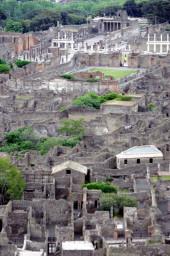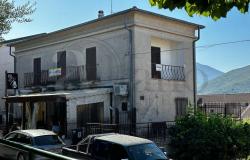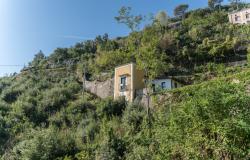The spell Pompeii has cast on writers, artists, historians and travellers over the centuries is the focus of a two-day international conference starting in Naples on Friday.
Scholars and critics are holding a string of meetings looking at the impact and influence of the Ancient Roman city over the last 150 years.
Buried during the course of a two-day volcanic explosion in August 79 AD, the site lay hidden for nearly 1700 years until its discovery in 1738.
Excavations started in the mid-18th century but Pompeii only began sparking popular imagination from 1860, when a Neapolitan archaeologist named Giuseppe Fiorelli took control of the site.
He realized that large holes in the solidified ashes had once held human remains, frozen in flight, and came up with the idea of filling the gaps with plaster to create moulds of the fleeing Pompeians in their final moment of life.
Since then, Pompeii has drawn visitors from around the world, and now attracts some 2.6 million people annually.
Its story has appeared in fiction, poetry, literature, art and architecture.
A series of debates over the two-day event will focus on the impact of Pompeii in a variety of fields.
The film talks will include one on the gap between reality and cinematic accounts of Pompeii, and one on representations of Pompeii in late 20th-century cinema.
Among the art topics are discussions on early landscape paintings of Pompeii, postcard precursors designed as mementoes for travellers, and Pompeii as an iconic representation in 19th and 20th-century art.
Religion will be touched upon with discoveries of early Christian imagery in Pompeii and how Pompeii has figured in speeches by the current pope, Benedict XVI, and his predecessor John Paul II.
A talk entitled ''The Revival of Pompeii'' will look at renowned reconstructions of Pompeian buildings ordered by King Ludwig I of Bavaria, artist Pablo Picasso and industrialist and collector J. Paul Getty, all of whom fell in love with the destroyed city and sought to recreate part of it for themselves.
There will also be discussions on how the city has appeared in European literature, its portrayal at the theatre and its role within the theories of Sigmund Freud.
A great deal of what we know today about the everyday life of the Roman empire - its social structure, domestic arrangements and high standard of living - stems from the remains of Pompeii and the neighbouring town of Herculaneum.
The eruption of Vesuvius on August 24, 79 AD buried the two towns in lava, flames and stones, effectively taking a 'snapshot of life' in the Roman empire that remained hidden underground until excavations began in 1748.
Historians believe that most of Pompeii's 20,000 residents managed to escape the eruption, although some 2,000 people are thought to have perished.








